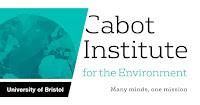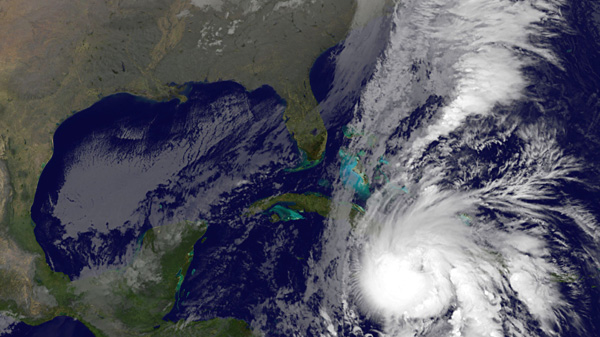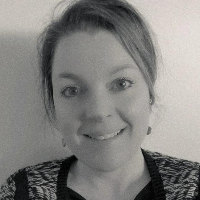The School of Education’s, Education in Small States Research Group (ESSRG) in collaboration with the Cabot Institute for the Environment and the Centre for Comparative and International Research in Education (CIRE), have produced a short (15 minute) video as a direct contribution to COP26 in Glasgow. This has been developed from the zoom recording of a joint online event titled ‘Voices from SIDS at the Sharp End of Environmental Uncertainty: Small Island Developing States (SIDS) Speak to COP26’ held on 5 October 2021.
This professionally developed video highlights the ‘voices’, views and climate change priorities held by youth, community members, traditional village elders and national leaders ‘Living at the Sharp End of Environmental Uncertainty’ in all three global regions of SIDS: the Caribbean, the Indian Ocean and the Pacific (see www.smallstates.net).
The video also includes a response from Professor Dann Mitchell from the Cabot Institute, and a commentary from University of Bristol Alumni and long-time Governor-General of St Lucia (1997-2018), Dame Pearlette Louisy.
To maintain our input for COP26 discussions, this Cabot Institute blog reinforces the key messages from the video presentation in the words of the lead participants from Saint Lucia, The Maldives and Tuvalu: messages that we hope others will continue to share and support.
Saint Lucia
COP26 – Can Glasgow deliver?
“One Point Five to Stay Alive”. This was perhaps the most memorable phrase on the minds and lips of delegates when the Conference of Parties (COP 21) ended in Paris a few short years ago. The small island developing states seemed to have punched above their weight when they persuaded the international community to commit in principle to keep world temperatures and sea level rise below the 1.5 degree-level so that they could survive. The euphoria then was palpable and undeniable.
 |
| (Artist: Jonathan Gladding) |
But, as we engage in Glasgow and COP 26, what was hailed as an infectious rallying cry must not be allowed to lose its lustre and become just another catchy phrase or worn-out platitude. The United Nations Secretary General’s fears that “Glasgow may not be able to deliver” could be seen as salt on an already open wound … but let us hope that it is a timely warning to others worldwide, a plea that helps to keep alive the hopes that SIDS are holding on to.
What then lies in store for small island developing states? Surely, they cannot be faulted for sitting idly by, for they have been very proactive in addressing climate change issues in order to build their resilience against this existential threat. The Caribbean region, for example, has recently released The State of the Caribbean Climate Report which is aimed at strengthening the strategic planning and decision-making processes that will be required to accelerate their resilience building efforts. The projections for the region are not at all encouraging. They point to rising sea levels, hotter temperatures (predicted to reach a rise of 1.76 degrees by the end of the century), more variable rainfall with increased drying (by almost 17%), increased sea surface temperatures and more intense Category 4 and 5 hurricanes. (See: Climate Studies Group Mona (Eds.) 2020, The State of the Caribbean Climate. Produced for the Caribbean Development Bank).
These predictions will undoubtedly adversely affect the core livelihoods of Caribbean people already living in a very vulnerable geographic space, who must learn how to live both now and in the future. The international community meeting in Glasgow must therefore make every effort to facilitate the sustainable development of our small island developing states. Education for resilience and sustainable development must take centre stage now, for time is not at all on our side.
In 1993, one of Saint Lucia’s Nobel Laureates, Sir Derek Walcott (Literature 1992), warned in his Nobel Lecture that “a morning could come when governments might ask what happened not only to our forests and our bays, but to a whole people”.
We appeal therefore to COP 26 to heed these warnings to ensure that such a morning never comes. Living at the sharp end of environmental uncertainty, as small island developing states are, cannot be considered sustainable living.
The time to act decisively is now. Glasgow must deliver. Failing which, we will have nullified the very concept of sustainable development proposed by the Brundtland Report … that is, development that meets the needs of the present without compromising the ability of future generations to meet their own needs.
In referring readers back to the video, we wish to thank Curtis Raphael who helped to put the Saint Lucia section together, and Crispin d’Auvergne, the Programme Director of the Climate Change and Disaster Risk Management of the Organisation of Eastern Caribbean States (OECS) who provided access to the two Reports cited in our presentation.
Maldives
The contribution to the video from the Maldives aims to bring multiple and diverse voices from the islands of the Maldives to Glasgow and COP26. It highlights their everyday experiences and anxieties about the environment and climate change. These voices come from a range of contributors from different levels of the society, including school children, fishermen, a grandfather, divers, surfers, environmentalists, farmers, entrepreneurs, policy makers and politicians.
It is clear there is a keen awareness of the fragility of the local biophysical environment and the existential threat posed by climate change on livelihoods and the very survival of the nation and the population. As is evident, climate anxiety is up close and personal for all who live in the country. There is an acute awareness of the importance of protecting the environment to mitigate a potential catastrophe caused by rising sea levels.
While Maldivian authorities continue to develop domestic policies to mitigate the worst effects of climate change, these actions at the local level are woefully insufficient. The larger polluters worldwide also need to commit to real action in their pledges, and act now to reduce harmful emissions at the same time as they assist smaller nations to convert to and adapt to low carbon economies.
 |
| Image credit: savefainu |
Tuvalu
We hope our video from Tuvalu will speak for itself. We are one of the most vulnerable nations in the world, facing a 2-meter rise in sea levels that will inundate our nation. Our plea to the international community highlights the fact that we are relational beings, what we do today one way or the other will affect people around us, people around the globe and even you and me, someday. Therefore, as global citizens, this is the time that we must work towards building a safe, healthy and resilient world so that one day we can proudly say, Yes ! We were the generation that made it happen – we set aside our differences and as a kaiga (family) we created this fantastic world for our children, our future.
This professionally developed video and the full, 90 minute, Zoom recording are also available on the Cabot YouTube Channel. See http://www.bristol.ac.uk/cabot/news/2021/soe-cop26.html.
———————————
This blog is written by Dame Pearlette Louisy; Dr Merle St Clair-Auguste; Dr Aminath Muna; Dr Aminath Shiyama; Dr Rosiana Lagi; and the ESSRG Leadership Team.
Read all blogs in our COP26 blog series:







.jpg/800px-Flickr_-_DVIDSHUB_-_USS_Iwo_Jima_assists_Haiti_after_Hurricane_Tomas_(Image_1_of_7).jpg)

